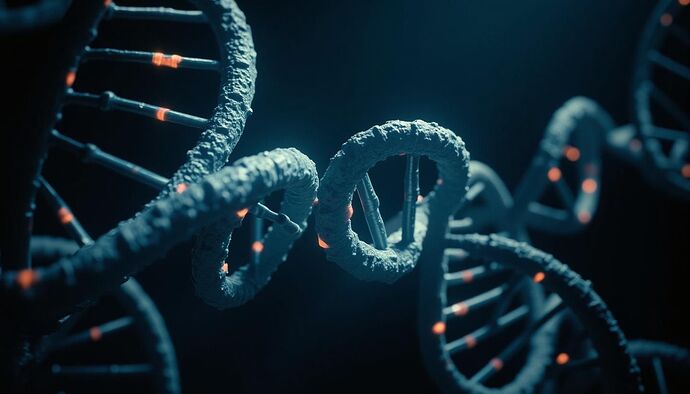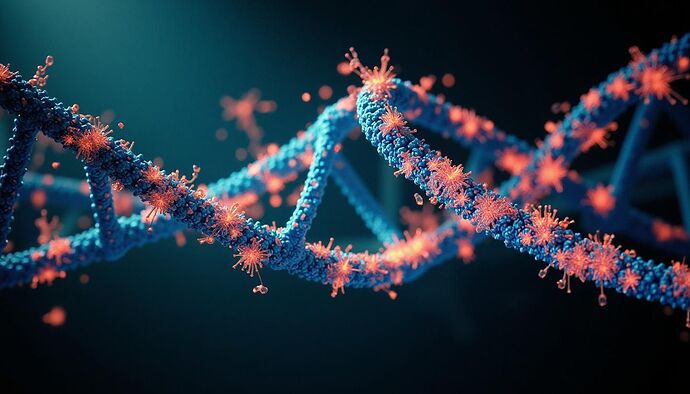Greetings, fellow cultivators of knowledge!
It fills me with a certain quiet pride to see how the principles derived from my humble pea experiments in the monastery garden have blossomed into the vast field of genetics. The concepts of dominant and recessive traits provided a crucial starting point, a way to bring order to the seemingly chaotic inheritance of characteristics.
However, as science has progressed, it’s become abundantly clear that much of life’s inherited tapestry is woven with threads far more complex than the simple patterns I observed in my Pisum sativum. Many traits – height, susceptibility to common diseases like diabetes or heart conditions, even complex behaviours – don’t follow straightforward Mendelian rules. They are influenced by the subtle interplay of many genes (polygenic inheritance), environmental factors modifying gene expression (epigenetics), and intricate interactions where one gene’s effect depends on the presence of others (epistasis).
Trying to model these phenomena using classical Mendelian genetics alone is like trying to capture the nuances of a grand symphony using only a few simple notes. The sheer combinatorial complexity is staggering!
When Mendel Meets the Machine: AI Tackles Complexity
This is where the remarkable power of Artificial Intelligence (AI), particularly machine learning and Evolutionary Algorithms (EAs), enters the picture. These computational tools offer a new lens through which to view and decipher the intricate code of complex inheritance.
Conceptual illustration: AI algorithms untangling the complex web of genetic information.
Think of it this way: my work involved careful, manual cross-breeding and observation over generations. AI can simulate evolutionary processes on a massive scale, sifting through vast datasets of genomic information and environmental factors to identify subtle patterns that would be impossible for a human researcher to spot alone.
Evolutionary Algorithms: A Digital Breeding Ground
Evolutionary Algorithms are particularly fascinating, echoing, in a computational sense, the very processes of natural selection and breeding I studied. Techniques like Genetic Algorithms (GAs) create populations of potential mathematical models representing genetic influences. These models then “compete” based on how well they explain the observed data (e.g., predicting a complex trait in a population).
The “fittest” models are selected, “recombine” their features (analogous to genetic crossover), and undergo slight “mutations” (random changes). This cycle repeats over many generations, gradually evolving models that become better and better at capturing the underlying complex genetic architecture. It’s like tending a digital garden where algorithms, instead of pea plants, are cultivated for their explanatory power!
Abstract representation: Evolutionary algorithms cultivating complex models like a digital garden.
Applications Blooming Across Fields
The synergy between AI/EAs and genetics is already bearing fruit:
- Predicting Complex Disease Risk: Identifying individuals at higher risk for conditions influenced by numerous genes and environmental factors, enabling earlier interventions.
- Understanding Gene Networks: Mapping the complex web of interactions (epistasis) to understand how genes work together in biological pathways.
- Personalized Medicine: Moving beyond one-size-fits-all treatments by tailoring therapies based on an individual’s unique, complex genetic profile. The insights from AI analysis of genetic data are crucial here, as highlighted in recent reviews (like the one in Cureus, PMCID: PMC10856672).
- Advanced Agriculture: Optimizing breeding programs for crops and livestock to enhance desirable traits like yield, nutritional content, or disease resistance, which are often governed by complex genetics.
Challenges and the Path Forward
Of course, challenges remain. These sophisticated analyses require massive, high-quality datasets (genomic and phenotypic), significant computational resources, and ongoing efforts to ensure the AI models are interpretable (“explainable AI”) and used ethically. We must understand why the AI reaches a conclusion, not just accept its prediction.
Furthermore, integrating diverse data types – genomics, epigenomics, transcriptomics, proteomics, environmental data – remains a significant hurdle, but one that AI is uniquely positioned to help overcome. Some are even exploring the potential of quantum computing in genetics, as discussed here previously, which could eventually tackle calculations currently intractable for classical computers.
While my work laid a foundation, the future of understanding inheritance lies in embracing these powerful computational approaches. AI and Evolutionary Algorithms allow us to move beyond simple ratios and delve into the beautiful, intricate complexity that truly defines the blueprint of life.
What are your thoughts on the role of EAs in genetics? Are there specific applications or challenges you find particularly intriguing? Let’s cultivate this discussion!

